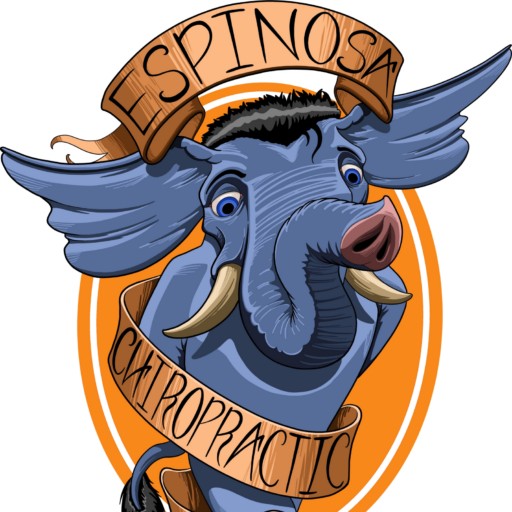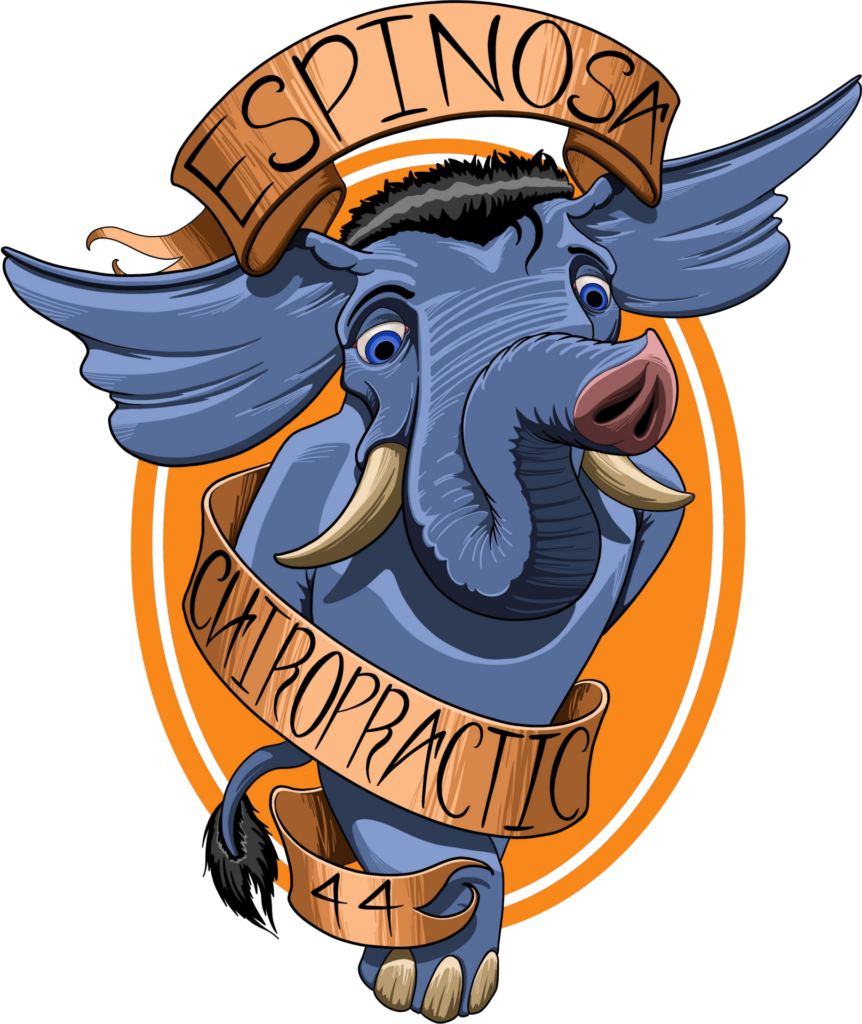Posts by adminjosh
New Patients
Lifestyles of the Anti-Inflammatory

Inflammation is one of the most insidious agents of disease because it starts with something good and necessary, the body’s natural healing response, and evolves into something destructive. Chronic inflammation compromises the systems of our body and leaves us open to the perils of age and life-altering conditions, including cancer and heart disease. Reducing inflammation’s role in your life means realizing a life with a lower risk of disease, looking and feeling younger, and living a longer, more prosperous life. We are familiar with the symptoms of chronic inflammation including persistent aches and pains in joints and muscles, and we recognize that it is no way to live.
The basics of an anti-inflammatory lifestyle include diet, exercise and sleep. The most immediate way you can start accounting for high levels of inflammation is by avoiding foods and activities that directly aggravate the body’s inflammatory response including processed foods and sweets, alcohol and tobacco and replacing these habits with foods that fight inflammation including omega-3 fatty acids, olive oil, nuts, tomatoes and green leafy vegetables. Hydration is important, as is finding ways to relax and sleeping well. With this, we can help; our chiropractic services help to regulate the nervous system. fight inflammation and help the body relax, especially if muscle tension or achy joints are a source of consternation.
We don’t want you to linger any longer in the grips of chronic inflammation; instead, give our office a call so we can start you on the path toward living despite conditions that are caused by or related to inflammation.
10,000 Steps: Is Walking your way to Fitness Realistic

What’s the big deal behind 10,000 steps?
It is a nice round number that can be easily tracked by fitness devices, and the number seems to have stuck. Science is currently debating the specifics of 10,000 steps down to the detail of the individual’s leg length, and overall fitness of the individual. Of course, fitness is more nuanced than a simple round number like 10,000 but there is still merit to the idea.
The math behind 10,000 steps:
10,000 steps can be achieved in roughly 30 minutes of walking. This is a lot easier on the ears than 150 minutes of exercise per week, which 30 minutes of walking a day actually exceeds. This is enough to qualify you as a “moderately active person.”
The idea of 10,000 steps is right
Perhaps you already hit the gym three times a week; in this case, walking 10,000 steps a day is unlikely to increase your level of fitness. For someone who never exercises, 10,000 steps can be a boon. Even if the verdict is still out on just how healthy 10,000 steps can be, the idea is in the right place: it is easy to understand and sets a baseline to strive for. This falls in with the idea of setting a daily fitness goal for yourself. So let’s take this idea and adapt it to your life.
The question remains: how can you be more healthy?
Setting realistic goals is the best way, so rather than following arbitrary guidelines such as 10,000 steps, think at a more individual level- what ways can I improve? Here are some ideas to get you started:
- Walk 30 minutes a day
- Eat 1-2 pieces of fruit per day
- Stretch for 30 minutes
- Run, swim, or bike (whichever makes you happiest) for 30 minutes twice a week.
Start by keeping your goals broken into realistic chunks of time such as 10 minutes or half an hour and powerful changes in both attitude and fitness will result. We want to help you heal your body so that you can focus on activities that make you happy and keep you fit. If you have long-standing pain or dysfunction that is holding you back, give our office a call to schedule an appointment today. We will work with you to detect the true cause of your pain and create a multi-faceted plan for removing you from the clutches of pain today.
Range of Motion Where it Matters: Protecting your Neck

Few places are as important for a range of motion as the neck
Imagine that your neck had no independent articulation. While this may perhaps benefit people who suffer injuries from movement, it would make living a real pain in the…you guessed it. You would have to move your entire upper body to see from side to side or bend backward and forward to see up and down. For many people, the unfortunate reality is that injury or repetitive trauma has reduced their range of motion and makes normal tasks like looking side to side painful.
Stretching in the Shower: An Excellent Idea

Why shower and stretch?
The shower is as good a place as any to have a stretch. It has the advantage of being a calming environment and, as the hot water cascades down on your weary muscles, why not turn up the relaxation one more notch by throwing in a couple of simple stretches? A few things to keep in mind: focus on being mindful by breathing deeply and avoid letting yourself become too dizzy; make sure you are properly hydrated and that the water temperature is set comfortably. Cool water has a tendency to tighten mussels while warmer water tends to loosen them.
A few shower-worthy stretches
- The clasped-neck stretch: Clasp two hands on the crown of your head and gently lower your head down toward your chest, effecting a double chin. Hold for 5-10 deep breaths.
- Release the shoulders: stand as upright as possible and squeeze your shoulders together. Hold 3 deep breaths, release and repeat. To add to the stretch and open up your chest cavity further, spread out your arms behind you as you squeeze.
- The back-bend: Stand upright, place your hands on your lower back/upper buttocks with fingers pointing upward and arch your back. Hold 5-10 deep breaths, release and repeat.
Warm water and stretching both have the advantage of releasing your muscles from tension. After a shower and a stretch, your body will be at one of its most relaxed points possible during the day. By practicing deep breathing, you are also calming the mind. This makes the shower and stretch combination a powerful tool for people who have difficulty falling asleep.
Stretching (and showering) is an integral part of our wellness plan
We believe that starting with 10 minutes of dedicated stretching a day can set you on a path toward doing great things for your body. Always stretch where you feel most comfortable- for some people this is in public, for others it is in the shower. Find your happy place and stretch it out! If you need help addressing long-standing muscle tension, back pain or nerve dysfunction related to subluxation, give our office a call to schedule an appointment today.
Amy
 Amy and her family have been patients at Espinosa Family Chiropractic since 2019! She and her family have experienced the health benefits of Chiropractic care and now as part of the team, she is excited to help patients recover their health and function through Chiropractic. Since she started as a patient, she has a unique perspective that helps her relate to our patients’ needs. When Amy is away from the office she enjoys cooking, spending time with her family (Grandkids!), and traveling for sports games or entertainment. You will know her by her warm nature and welcoming smile when you come to our office. She looks forward to meeting you!
Amy and her family have been patients at Espinosa Family Chiropractic since 2019! She and her family have experienced the health benefits of Chiropractic care and now as part of the team, she is excited to help patients recover their health and function through Chiropractic. Since she started as a patient, she has a unique perspective that helps her relate to our patients’ needs. When Amy is away from the office she enjoys cooking, spending time with her family (Grandkids!), and traveling for sports games or entertainment. You will know her by her warm nature and welcoming smile when you come to our office. She looks forward to meeting you!
Focus on Fascia: Decoding the Mystery of this Protective Layer of Tissue

Healthy fascia, healthy human
Get to know your fascia, the layer of tissue that covers our muscles and extends from head to toe. But what is the purpose of this mysterious thin layer that literally covers the entirety of your body without interruption? Primarily made of collagen, the fascia’s main purpose is to attach and stabilize the muscles of your body while encasing and separating vital organs. Because it is thin and tensile, it is quite vulnerable to injury which causes it to tighten and contract and this can be truly painful.
Myofascial pain is not your friend
When the fascia is injured, a primary layer of defense is temporarily stymied: this can pressurize nerves, muscles and organs. And because of its interconnectivity, the pain doesn’t necessarily stop at the point of injury. The acute point where injury occurs may be where most pain is experienced, but myofascial pain is referred pain: it can pop up seemingly wherever.
Treating myofascial pain
Myofascial pain is undetectable using medical scanning techniques such as x-ray and MRI. Instead, it is most often determined by detecting trigger points in the muscle. We use manual modalities including:
- Myofascial release
- Active release
- Trigger point therapy
- Electrical stimulation
- Ultrasound
- Heat and ice
These treatments relax your muscles and improve circulation that improves the quantities of oxygen and nutrients that reach the injury. If you are suffering from fascial pain, or suspect that you might be, give our office a call to schedule an appointment today.
Lumbar Pressure as Determined by Posture

Your spine is always under pressure
Whether you like it or not, the most common positions we adopt during a given day are putting a disproportionate amount of pressure on our spines, and our lumbar vertebrae is where this pressure accumulates! Here are some statistics as measured by the pressure sustained by a lumbar intervertebral disc:
- Low pressure: lying on your back: ~25kg of pressure
- Medium pressure: standing upright: ~100kg of pressure
- High pressure: sitting: ~125kg of pressure
Sitting and standing are made worse by leaning forward and bearing weight, while forward head posture magnifies the pressure of the head on the spinal column by up to 10X for every inch it is held forward. So if there is one thing we can start doing for our spines right away, it is being aware!
Chiropractic as Preventative Healthcare

For most people, chiropractic comes to mind only after an injury
This is a shame because chiropractic might have prevented that very same injury. While obviously, this is not a 100% guarantee, a body under regular chiropractic maintenance is more resistant to injury and quicker to recover after an injury occurs. Depending on your level of activity (or inactivity!) you can benefit from the preventative healthcare that chiropractic offers.
Keep Pain out of your Cycling Life

Cycling doesn’t have to cause you pain!
For many people, cycling begins when you are a kid cycling around the neighborhood, and for many people it will remain that way, less of a means of transportation and more of a fun way to spend a few hours. But for people who take it as an athletic pursuit, biking down mountainous trails or across miles of open road, cycling takes on a more integral role in their health routine. And that goes both ways: yes it builds muscle and cardiovascular health, but it is also fraught with challenges to the body.
What are the key dangers facing cyclists from a chiropractor’s perspective?
Injuries that cyclists will incur are chiefly due to the repetitive nature of the sport. Below you will find some of the top dangers facing cyclists besides injuries related to crashing!
- Overuse injuries: shock is absorbed through the hands and wrists and filters through to the shoulders; shock is also absorbed by the knees and all this jolting can impact your spine for the worse.
- Poor posture while biking: hunched over the handlebars is not a good look- and it is not good for you either! Your arms should share some of the weight, but not all of the burden. Make sure you consult with a cycling professional to determine and maintain good posture while cycling.
- An ill-fitting bike: a properly fitted bike will help you maintain good posture and mitigate shock and overuse injuries.
Cyclists benefit from chiropractic care
Chiropractic care is an important part of wellness no matter what you choose for sport. Chiropractic adjustment and regular attention to the muscles of the back can help to mitigate the pain inflicted on bikers, especially in the neck and shoulder region. If you are interested in feeling less pain, or preventing pain from interfering with your enjoyment of cycling, give our office a call to schedule an appointment today.
